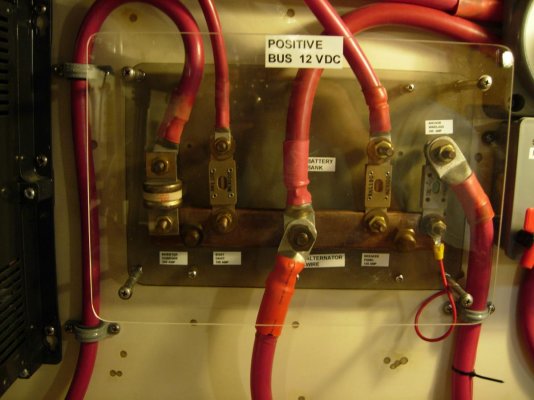angus99
Guru
I need to fashion a cover for the electrical “closet” in the ER which houses bus bars, terminal strips and many dozens of electrical connections. The original cover for this area was plywood, but I want to go with something that will allow me to see inside without removing a lot of screws. I’m also hoping that I can use a Flir camera, with the transparent cover on, to detect any warmth inside indicating a loose connection, etc. I can pretty much check any circuits this way on the boat except for this closet when it’s covered with plywood.
So what material would be best, polycarbonate or acrylic?
Thickness, I assume, will also matter here (not to be confused with the current TF thread on “length”). I assume the thicker the material, the less heat will be detectable by the Flir. An alternative would be to make the whole thing easily removable and shoot it uncovered from time to time with the Flir.
So has anyone done anything like this and what did you use?
So what material would be best, polycarbonate or acrylic?
Thickness, I assume, will also matter here (not to be confused with the current TF thread on “length”). I assume the thicker the material, the less heat will be detectable by the Flir. An alternative would be to make the whole thing easily removable and shoot it uncovered from time to time with the Flir.
So has anyone done anything like this and what did you use?


